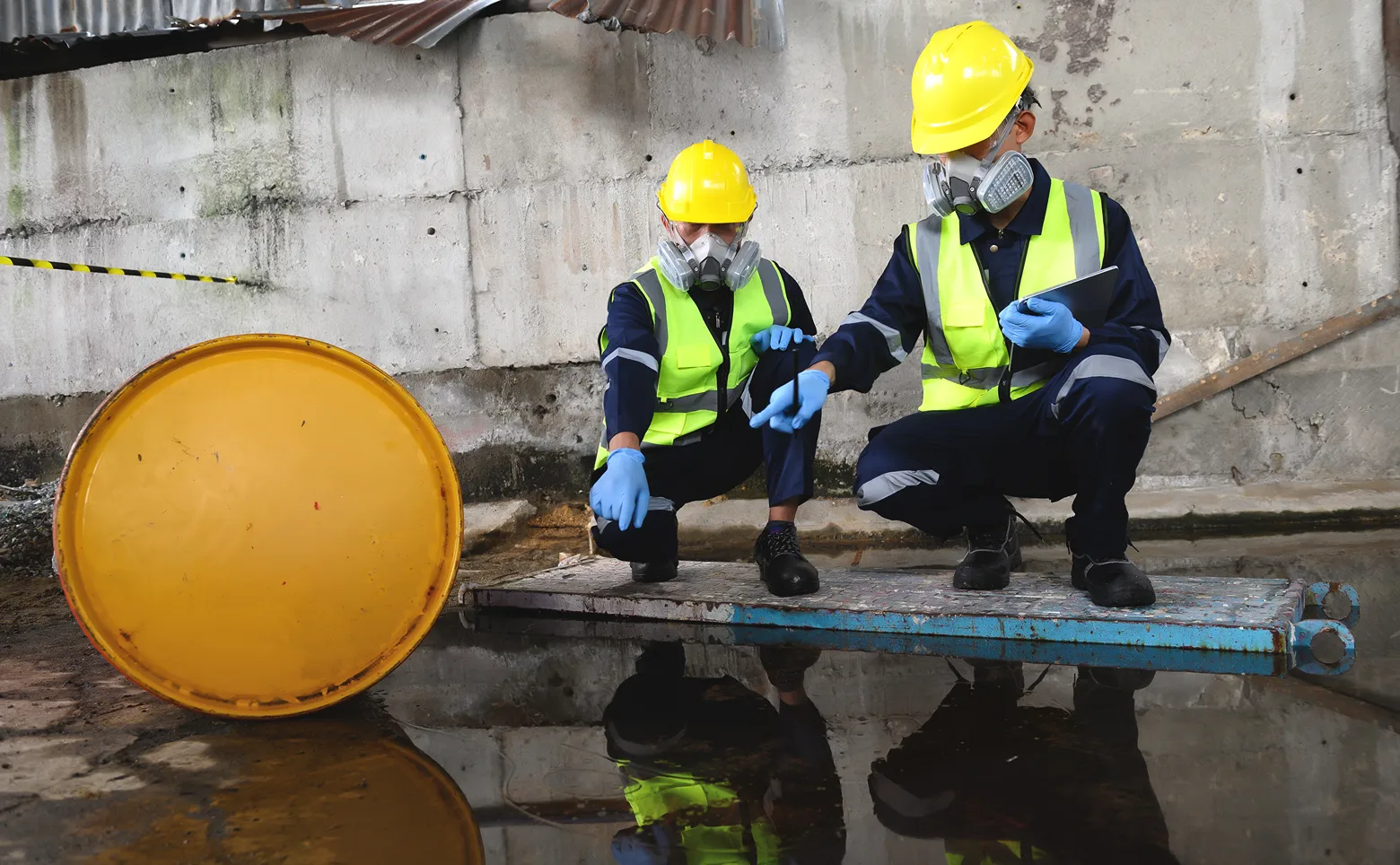The Environmental Remediation & Compliance sector is experiencing significant growth in 2025, driven by substantial federal investments, evolving regulatory requirements, and a deepening integration of sustainability into core business strategies. This dynamic environment calls for specialized expertise in engineering, technology, and data analytics. Infrastructure spending continues to accelerate growth, with proficiency in digital technologies such as AI and IoT becoming increasingly vital. Despite this strong momentum, persistent talent shortages—particularly in engineering—underscore the importance of proactive recruitment strategies and competitive compensation offerings.
MARKET OVERVIEW:
GROWTH & DRIVING FORCES
The environmental sector, encompassing health, safety, and consulting, is poised for continued expansion in 2025, driven by rising regulatory pressures, significant government funding, and corporate commitments to sustainability.
Environmental scientists and specialists are expected to see a 7% growth from 2023 to 2033, resulting in approximately 8,500 annual openings (U.S. Bureau of Labor Statistics). The global environmental consulting market is forecast to grow from $58.29 billion in 2024 to $60.72 billion in 2025, with long-term projections reaching over $147.74 billion by 2037.
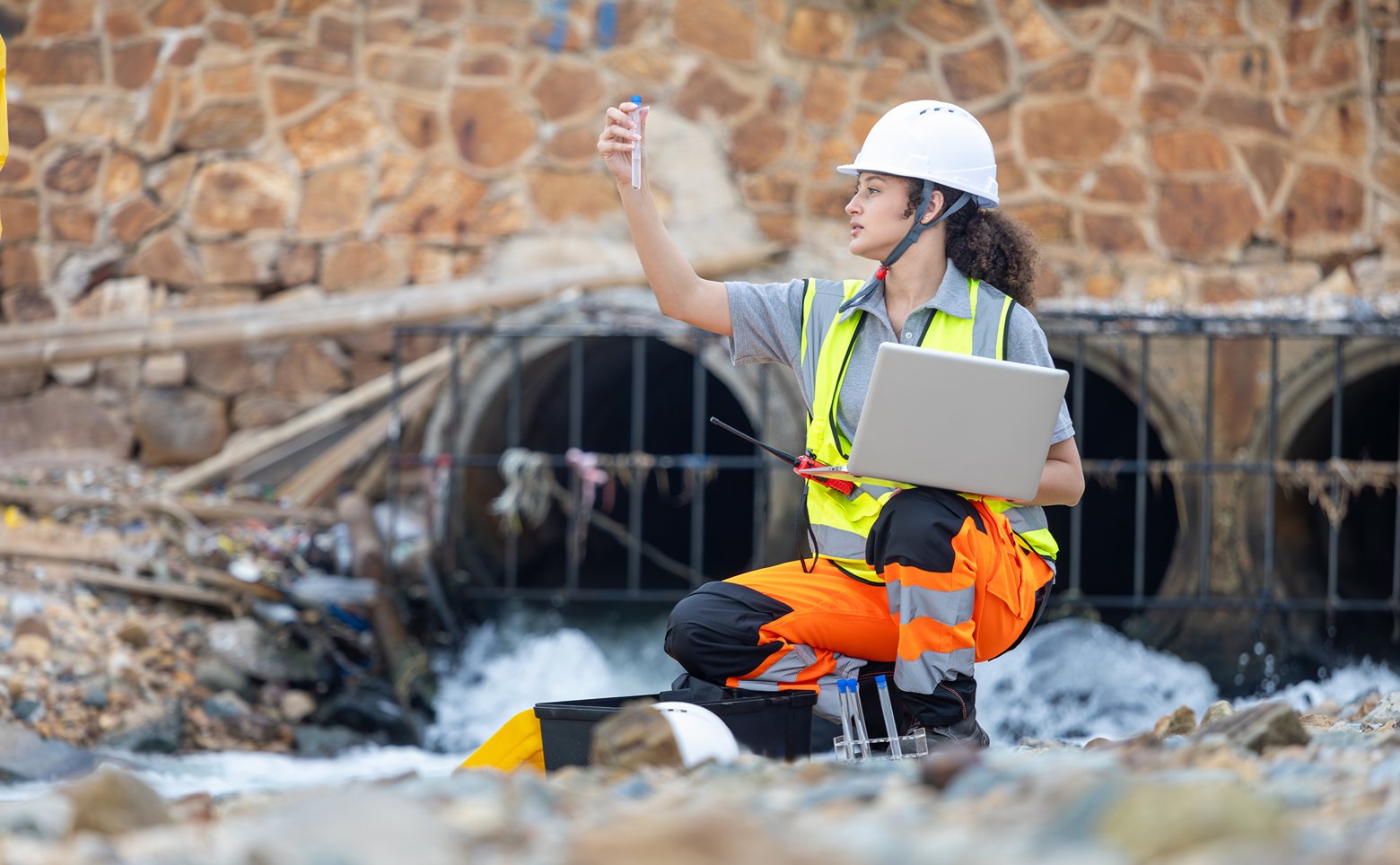
Key policy drivers include the Bipartisan Infrastructure Law (IIJA), supporting an estimated 800,000 jobs in 2025. Specifically, $21 billion allocated to environmental remediation is projected to support over 35,000 jobs annually, including increased funding for EPA Brownfield Grants and managing contaminants such as PFAS. The Superfund program remains active with 1,343 sites listed as of July 2025, sustained by a reauthorized excise tax on chemical manufacturers.
The integration of ESG (Environmental, Social, and Governance) principles into core business strategies is gaining momentum, driven by regulatory shifts such as the EU's Corporate Sustainability Reporting Directive (CSRD), compelling companies to expand internal capabilities for managing environmental performance.
KEY TRENDS SHAPING THE ENVIRONMENTAL REMEDIATION & COMPLIANCE SECTOR
The environmental remediation and compliance landscape is evolving rapidly, shaped by technological advancements and regulatory developments:
Digital Transformation
Digital technologies are widely adopted to enhance efficiency, with cloud-based EHS platforms foundational to safety management. IoT sensors enable remote monitoring and instant environmental alerts, while AI increasingly powers predictive analytics, automated permit compliance, and hazard detection. AI-powered systems are expected to become standard by 2026.

Regulatory Complexity
Regulatory shifts include new EPA refrigerant rules effective January 2026 and increased OSHA safety scrutiny. State-specific regulations around waste management, air quality, and water conservation necessitate proactive compliance strategies.
Sustainability Momentum
Driven by UN Sustainable Development Goals, companies are increasingly adopting circular economy practices, heightening demand for expertise in waste management and climate mitigation.
MOST IN-DEMAND ENVIRONMENTAL REMEDIATION & COMPLIANCE ROLES
Over the past year, The Planet Group has seen the highest demand for Environmental Remediation & Compliance roles such as:
- Project Managers
- Field Chemists
- Operators
- Environmental Specialists / Scientists
- Environmental Technicians
- Environmental Compliance Managers
- Administrative Assistants
- Material Handlers
- Receiving Technicians
- Business Analysts
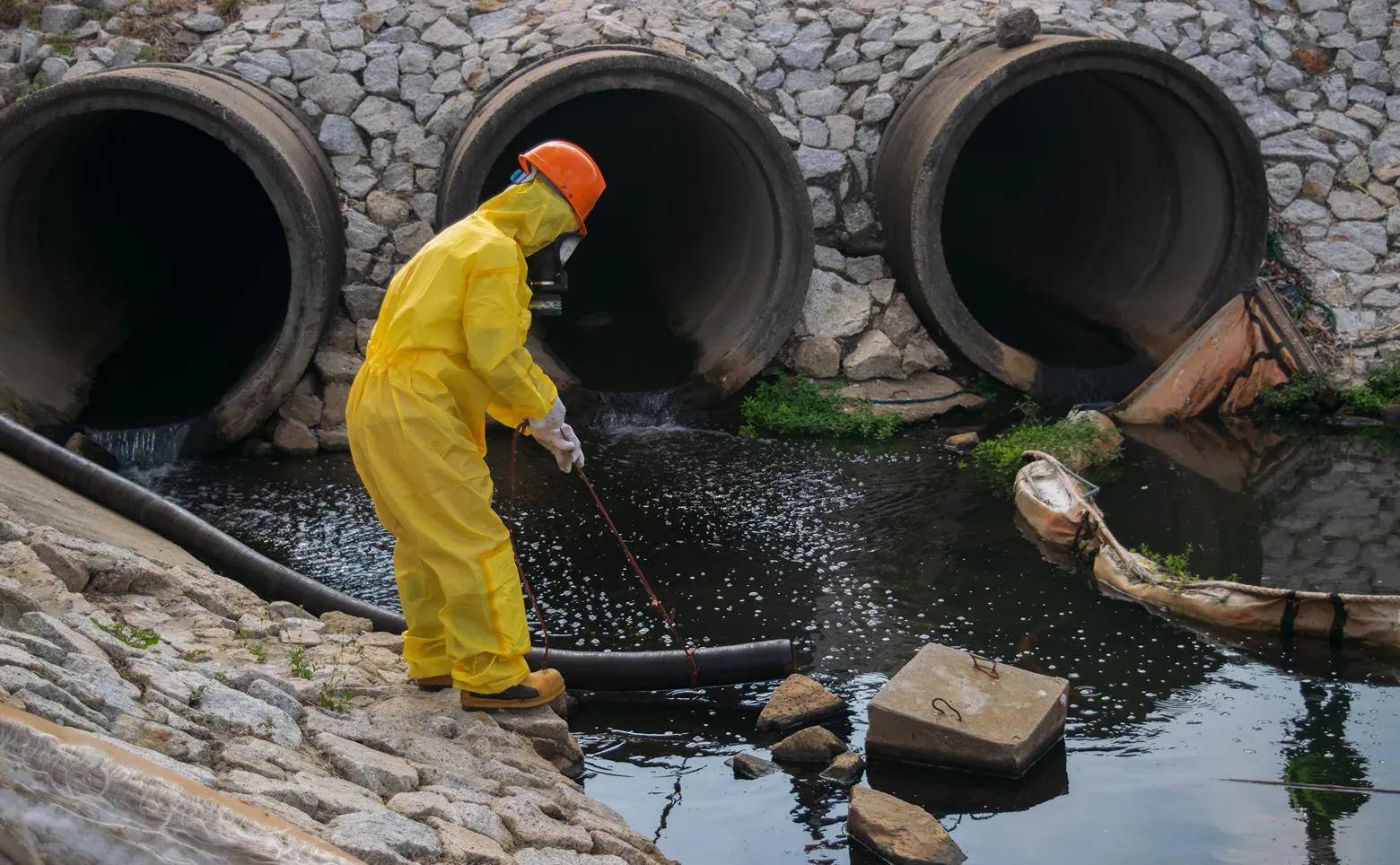
Direct Hire vs. Contract Roles
Here’s how our placements have broken down across the Environmental Remediation & Compliance sector: over the past year: 69% were contract roles, while 31% were direct hire—reflecting continued demand for agile, project-based talent.
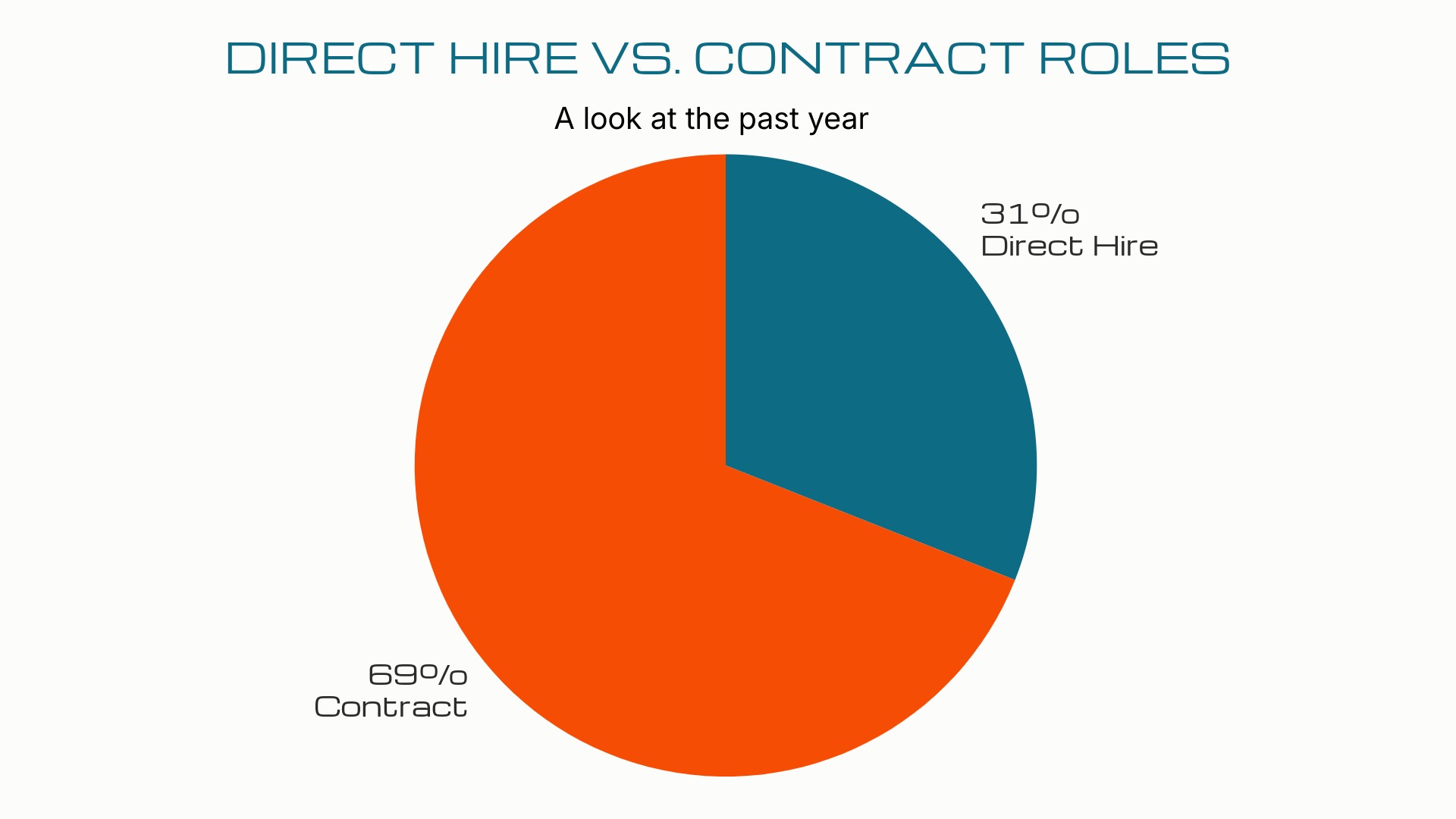
TALENT LANDSCAPE & CRITICAL SKILLS
A critical talent shortage persists, particularly within engineering. The American Council of Engineering Companies (ACEC) reported in 2025 that around 9% of engineering positions remain unfilled, and 75% of firms expected to increase hiring over the next 12 months.
When we asked our network to name their top challenge in hiring Environmental Remediation & Compliance professionals, their replies certainly reflected that talent shortage:
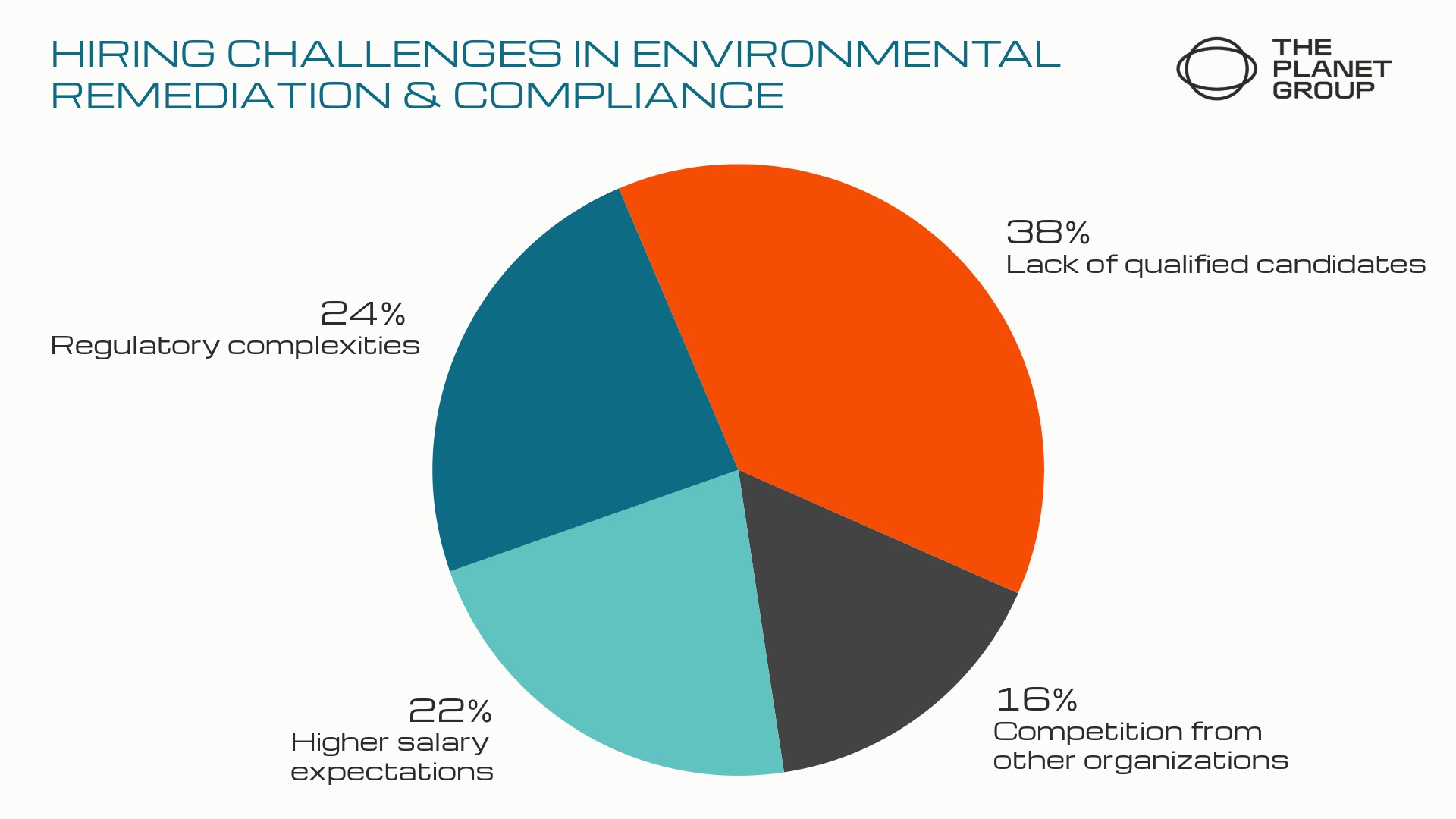
Organizations that move quickly, offer competitive packages, and work with specialized partners will be best positioned to secure top talent.
The U.S. construction industry alone anticipates needing 439,000 new workers this year to meet service demands. Meanwhile, the water industry faces an aging workforce, with roughly 30–50% of the U.S. water sector workforce becoming eligible to retire within the next 5–10 years.
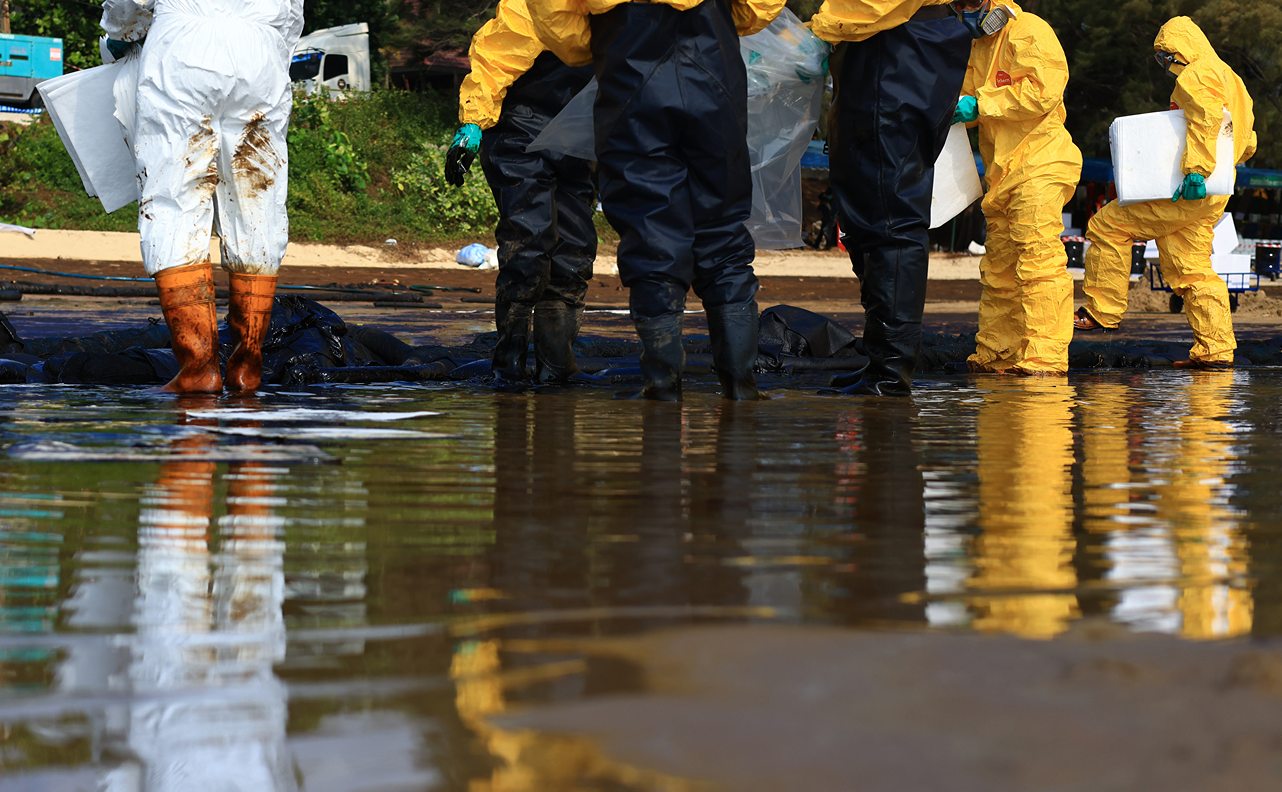
Employers increasingly value:
- Regulatory Expertise: Deep
knowledgeof environmental legislation (e.g., Clean Air Act, Clean Water Act, RCRA), OSHA standards, and state-specific regulations. - Project Management & Leadership: Strong capabilities in coordinating multidisciplinary teams and managing resources are vital for roles like Project Manager and Environmental Remediation Engineer.
- Communication & Collaboration: Clearly conveying complex technical findings and fostering stakeholder partnerships.
- Digital Literacy & Data Analysis: Proficiency in cloud-based platforms, remote monitoring tools, machine learning, GIS, Python, R, SQL, and data visualization.
Certifications such as Certified Environmental & Safety Compliance Officer (CESCO), Registered Environmental Manager (REM), and LEED Green Associate remain essential for validating professional expertise.
According to our network, Environmental Remediation & Compliance Engineers face a complex mix of systemic and structural challenges:
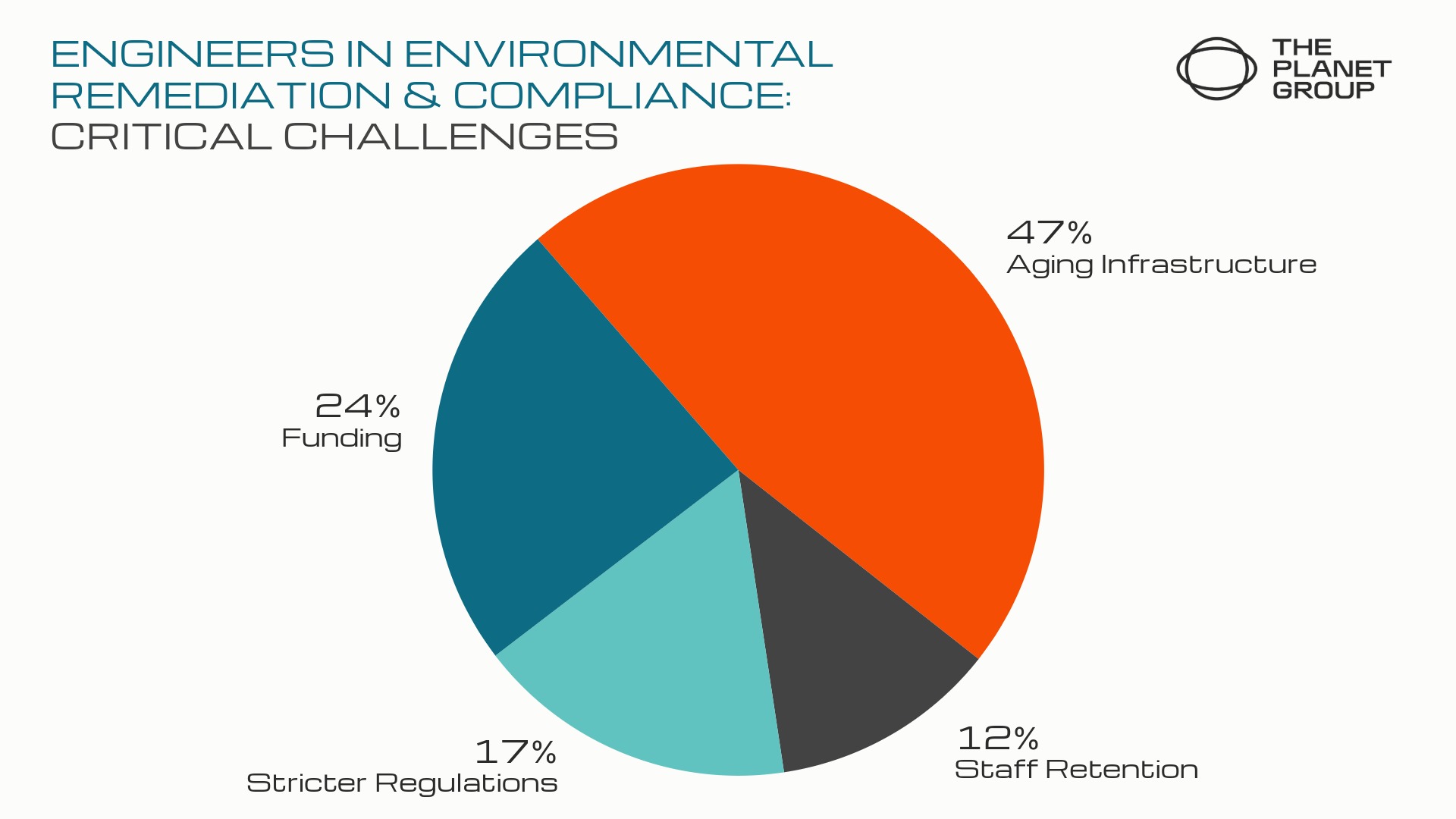
Forward-thinking companies must invest in both people and platforms to stay ahead of growing environmental demands.
TOP LOCATIONS FOR ENVIRONMENTAL REMEDIATION & COMPLIANCE JOBS
- Michigan
- Texas
- California
- Massachusetts
- New Jersey
- Indiana
- Wisconsin
- Illinois
- New York
- Florida
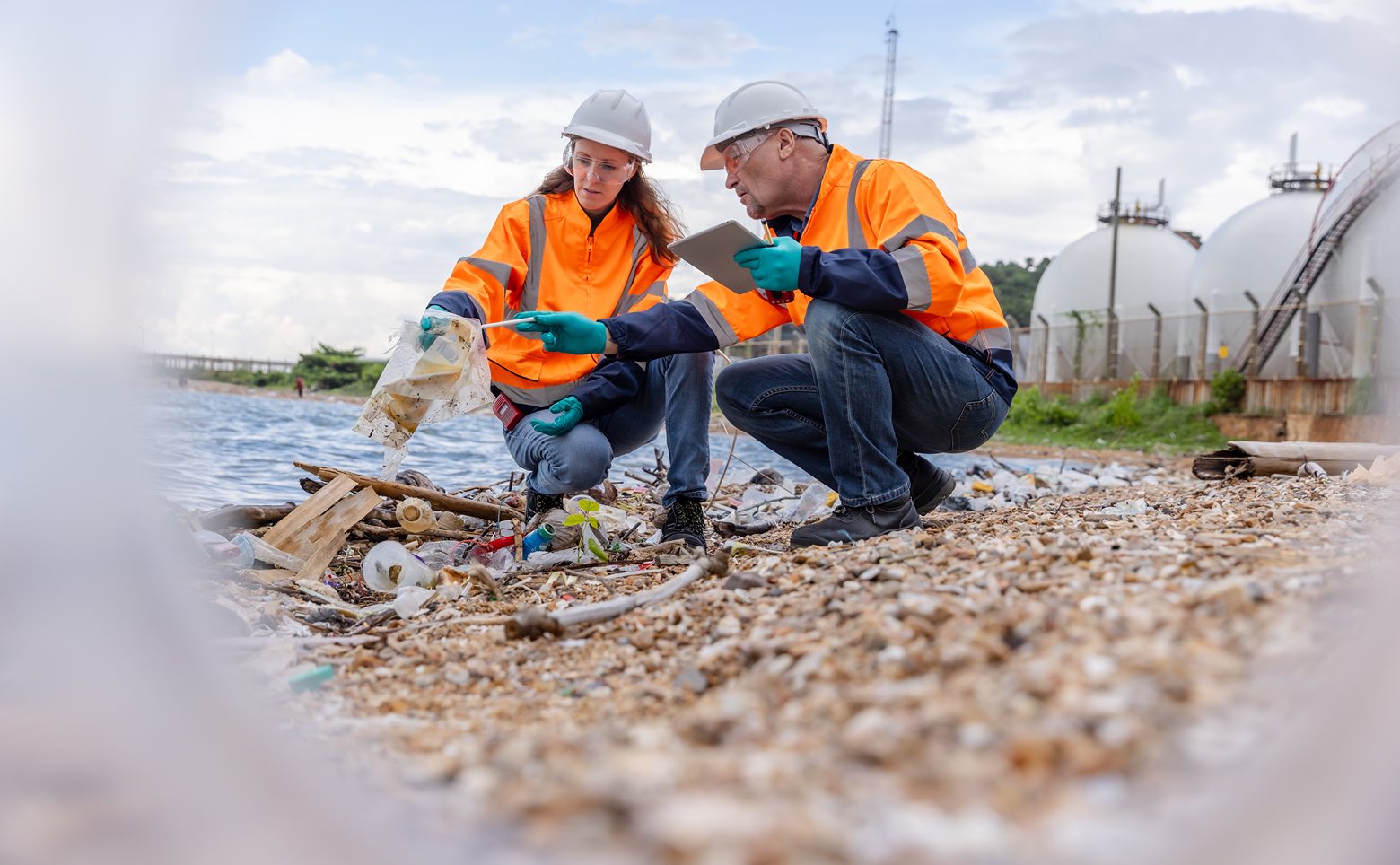
LOOKING AHEAD
The Environmental Remediation & Compliance sector continues to grow dynamically, driven by substantial investments and evolving regulatory landscapes. Technological advancements are reshaping job functions, demanding a digitally literate and adaptable workforce.
The critical talent shortage, particularly in engineering, creates a structural supply-side problem. Organizations must adopt proactive talent acquisition strategies, invest in continuous learning for existing employees, and emphasize their commitment to environmental purpose to attract and retain top talent. Leveraging technology will not only enhance operational efficiency but also attract tech-savvy professionals. Organizations that recognize and adapt to these shifts in talent demand, skill requirements, and technological integration will be best positioned for success.
If you’re in need of an environmental remediation & compliance staffing firm to help facilitate your hiring processes, let’s schedule a call to discuss our capabilities.
Download the PDF >
ABOUT THE PLANET GROUP
The Planet Group is a global professional services firm delivering strategic staffing and advisory solutions. We operate at the intersection of talent and transformation – connecting the right people with the right opportunities in the areas of technology, engineering, accounting & finance, digital marketing, and manufacturing.
Named one of the fastest-growing private companies in the US, The Planet Group operates with a global reach and a performance-first mindset. We partner with clients to move fast, stay agile, and drive measurable results – building high-impact teams that fuel transformation and growth.
Frequently asked questions:
Q: What credentials or certifications help someone advance in environmental remediation and compliance roles?
A: Some widely respected credentials include the Certified Hazardous Materials Manager (CHMM), Certified Environmental Professional (CEP), LEED Accredited Professional, Certified Environmental, Safety & Health Trainer (CET), and ISO 14001 Lead Auditor certifications. These credentials enhance credibility, especially in roles involving regulatory oversight, cleanup management, or sustainability compliance.
Q: Which industries or sectors are currently hiring the most for environmental remediation and compliance positions?
A: Strong demand often comes from oil & gas, chemical manufacturing, mining, waste management, construction, consulting firms, utilities, and governmental environmental agencies. These sectors need experts for site assessments, permit compliance, remedial design, monitoring, and regulatory reporting.
Q: What resources guide remediation planning and regulatory compliance decisions?
A: Some of the most trusted resources include:
- EPA’s guidance on remediation and hazardous waste cleanup, such as Guidance for Remediation Waste Management under RCRA US EPA and Guidance for Cleaning Up Groundwater, Soil and Air at Hazardous Waste Cleanup Facilities US EPA
- EPA’s remediation templates and documents for utilities and site managers to structure incident response and cleanup plans US EPA
- The Interstate Technology & Regulatory Council (ITRC), which produces national guidance and training on environmental remediation best practices CT.gov
- State-level guidance documents (for example, state remediation manuals or environmental department resources) that reflect unique local rules and cleanup standards Ohio EPA+1

.svg)


